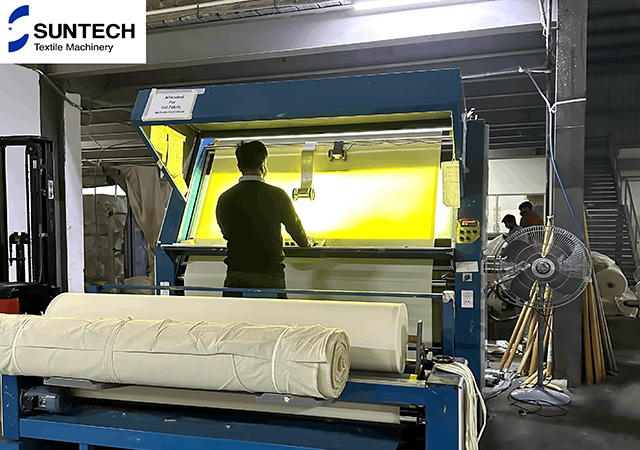Efficient and advanced technologies play a pivotal role in shaping the landscape of garment manufacturing. The fabric inspection machine stands out as a crucial asset in this industry, offering a multitude of benefits that contribute to enhanced safety, reduced costs, and the production of superior-quality garments. Uncover the transformative significance of fabric inspection machines, as they emerge as indispensable investments for today's garment makers.
The fabric inspection machine serves as a linchpin in the garment manufacturing process, dedicated to meticulously examining fabrics for defects and irregularities. This critical apparatus employs a camera to capture detailed images of the fabric, which are then scrutinized by operators. Detected defects are promptly marked, ensuring a streamlined quality control process.
Understanding Fabric Inspection Machines
Fabric inspection machines are instrumental in scrutinizing fabrics for flaws before they are utilized in garment production. These machines extend their utility beyond clothing, finding applications in inspecting other textile products like towels, sheets, and curtains. Two primary types of fabric inspection machines dominate the industry: visual inspection machines and automatic inspection machines.
Visual inspection machines rely on human operators to identify defects, while their automatic counterparts leverage sensors for a quicker and more efficient defect identification process. Automatic machines, with their speed and ability to inspect large fabric batches rapidly, offer substantial advantages over their human-operated counterparts.
Advantages of Utilizing Fabric Inspection Machines
Quality Assurance: Fabric inspection machines contribute significantly to elevating the quality of manufactured garments. Identifying defects before the fabric is utilized allows companies to avoid producing flawed products.
Time and Cost Savings: Automation in fabric inspection significantly reduces the time required for quality control checks. This efficiency translates into cost savings, making automated machines a valuable investment for clothing companies.
Worker Safety: Fabric inspection machines contribute to worker safety by eliminating the need for manual handling of defective fabrics. This reduces the risk of exposure to potentially harmful substances present in flawed materials.

Key Functions of Fabric Inspection Machines
Quality Verification: Ensuring the fabric's quality is paramount, and fabric inspection machines play a pivotal role in confirming that fabrics are free from defects and of high quality.
Color Fastness Checks: These machines assess color fastness, ensuring that garments made from the fabric will not fade or bleed during washing.
Defect Detection: Fabric inspection machines excel in detecting flaws such as holes or tears, preventing the production of substandard garments.
Efficiency in Resource Utilization: By automating the inspection process, these machines save time and resources that would otherwise be spent on manual checks.
Applications in the Garment Industry
Fabric inspection machines find extensive use in the garment industry by employing a systematic approach to defect identification. The fabric undergoes inspection via rollers and imaging, with the captured data analyzed by computers. This ensures that only high-quality fabrics meet the standards required for garment production.
Visual inspection machines, utilizing light and magnification, are the most common type in the garment industry due to their cost-effectiveness. Other variations, such as x-ray and laser inspection machines, offer specialized defect detection but are often overshadowed by the practicality and affordability of visual inspection machines.
In conclusion, fabric inspection machines have become the cornerstone of the modern garment industry, providing unparalleled control and accuracy in defect detection. Their efficient performance, precision, and cost-effectiveness make them indispensable for businesses aiming to increase profitability and ensure customer satisfaction. The fabric inspection machine has undoubtedly revolutionized garment manufacturing, paving the way for a future where quality and efficiency go hand in hand.




